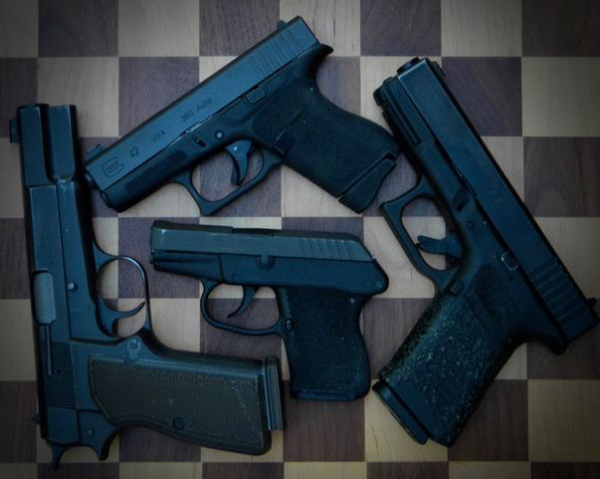
“Never met anyone in a gunfight,” the old saying goes, “that wished they had a smaller gun.” But I have met people who were in fights that wished for a smaller gun. The gun they “normally” carry was too big; it was left in the safe at home. A smaller pistol would have been easier to carry/conceal and it would actually be on their body somewhere.
Sometimes a “smaller” gun is just right.
Large, full-size pistols are great for shooting. They fit the hand well, providing a good, consistent grip – as long as the pistol isn’t too large. Heavier pistols have less felt recoil. The longer sight radius – distance between front and rear sight – is easier to aim, producing more precision. Larger pistols used to be much more reliable than their smaller siblings, although in the past few years this is becoming the exception rather than the rule.
The downside is that larger frame pistols are more difficult to carry and conceal. Obviously, the larger your body the easier concealment is. A good friend of mine can carry two full frame pistols – one on each hip – and they’re well hidden. I’ve always carried full-size 1911’s, and Hi Powers. For my body size I’m doing well to keep one of them covered, especially in warmer months.
Today there are plenty of mid-size and compact pistols available, in about any caliber you can think of. They’re reliable, more accurate than we can usually shoot them and easy to conceal. So far, so good but there are downsides to consider.
As always, “fit” is important. Full-size, mid or compact the weapon still has to fit your hands. Remember, “size” is in direct proportion to how large or small one’s hands are. What’s small to me is tiny to someone who can palm a basketball. Smaller pistols should be simple to operate. I’m not a big fan of thumb safeties. Their actual size and spring tension can make them difficult to manipulate. Plus, for close range-rapidly developing situations, the less you have to think about the better.
“What about caliber,” you ask? That’s usually one of the first things people ask, but in my opinion it's one of lesser concern. The same goes for magazine capacity. Keep in mind that we’re discussing self-defense, not security, law enforcement or military applications. First rule is to have a pistol that you can shoot and manipulate efficiently and carry discreetly on your body. While I don’t recommend something like a .22lr, this bullet has stopped a lot of attacks. I’m a fan of the .380, especially considering the offerings in this caliber. One benefit of the smaller calibers is that they’re easier to recover from the recoil, reducing split times between shots. For example, I prefer the Glock 42 in .380 as opposed to the 43 in 9mm.
More important than caliber choice is ammunition selection. “Defensive” rounds are mandatory. Standard full metal jacket ball ammo should be avoided. These bullets tend to punch right through. You want something that expands, creating large wound channels, and dumping all its energy into the body.
Having a small gun is always preferable to no pistol. Sure, you have to compromise, and a little research and experimenting is required, plus a healthy dose of practice. But when that time comes and you need a gun, it will be there ready and waiting.
Tiger McKee is director of Shootrite Firearms Academy. He is the author of The Book of Two Guns, AR-15 Skills and Drills, has a regular column in American Handgunner and makes some cool knives and custom revolvers. Visit Shootrite’s Facebook page for other details.